Like animals, plants are made up of trillions of small units called cells. Plant cells are similar to animal cells, but they have a different structure and contain some organelles not found in animal cells.
Also Check – Cell Organelles – The Complete Guide
Parts of plants are as follows-
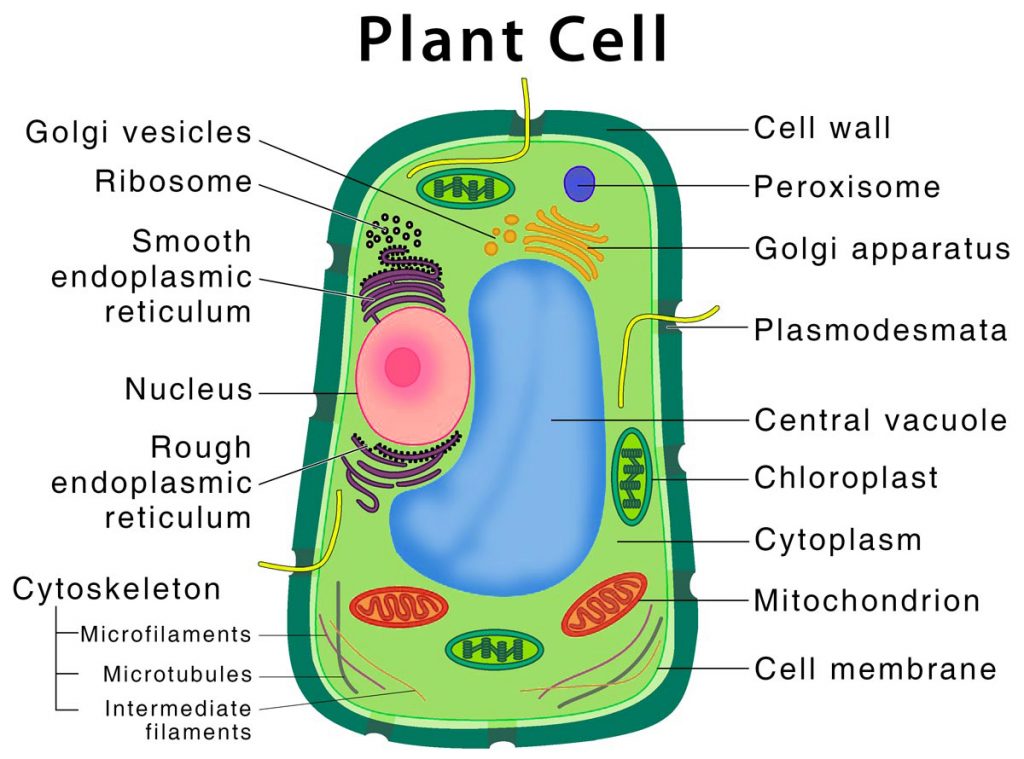
Also Check – 8 Important Differences Between Plant Cell and Animal Cell
Cell wall (Present in Plant cells only)
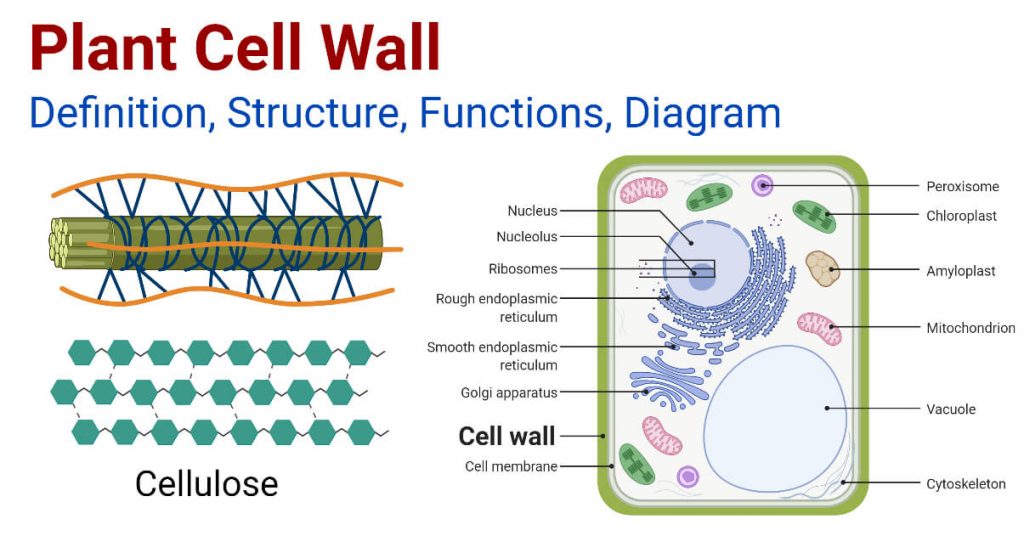
Table of Contents
Location Of Cell Wall
- Cell wall is the outermost layer in plant cells.
- It is a rigid layer surrounding the plasma membrane.
Structural Characteristics of Cell Wall
- Cell wall is permeable.
- It is mainly composed of cellulose.
3 Important Functions of Cell Wall
- Cell wall gives rigidity and shape to the plant cell.
- It allows substances in solution to enter and leave the cell without any hindrance.
- Cell wall provides protection to the plant cell.
Also Check – 12 Important Cell Wall Function
Also Check – Cell Wall – Structure , Composition , Location , Significance and Functions
Also Check – 3 Layers of Cell Wall
Also Check – What is Cell wall made up of ?
Cell membrane (also called Plasma Membrane)
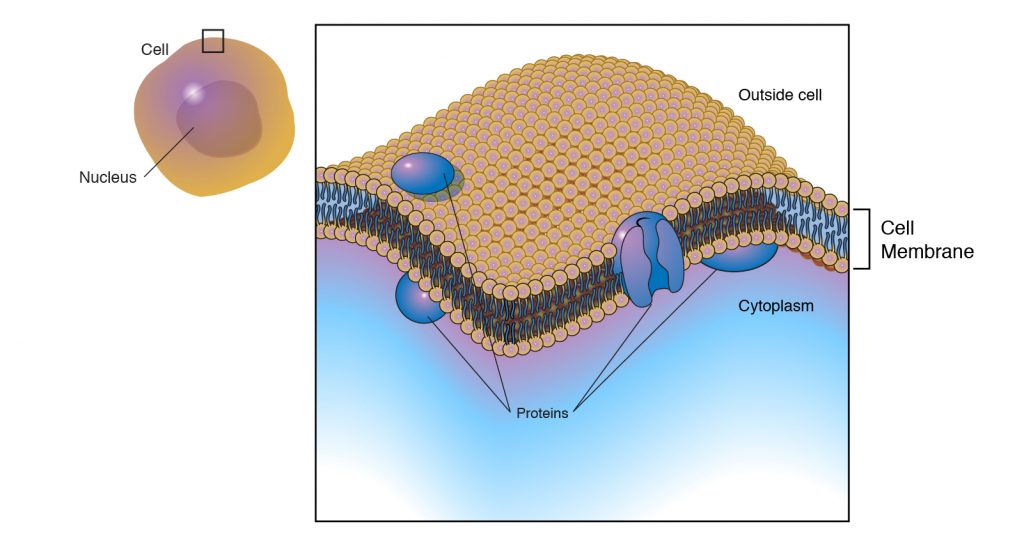
Cell Membrane (Plasma Membrane) Diagram
Location of Cell Membrane (Plasma Membrane)
Cell Membrane is Outermost in animal cells but in plant cells it lies next to the cell wall.
4 Important Structural Characteristics of Cell Membrane (Plasma Membrane)
- It is a very thin, flexible, living membrane.
- It possesses fine pores.
- Cell membrane is Semi-permeable.
- Cell membrane is made up of lipoproteins.
3 Important Functions of Cell Membrane (Plasma Membrane)
- Separates the contents of the cell from its surroundings.
- Regulates the entry of certain solutes and ions.
- Maintains shape of the cell (in animal cells only).
Also Check – 11 Difference between Cell Wall and Cell Membrane (Plasma Membrane)
Also Check – Cell membrane (Plasma Membrane )- Structure, Composition, Characteristics and 6 Important Functions
Also Check – Types of Transport Across Cell Membrane
Also Check – 4 Important Components of Plasma Membrane or Cellular Membrane
Cytoplasm
Location of Cytoplasm
Cytoplasm contains all the parts together inside the plasma membrane .
Structural Characteristics of Cytoplasm
- Nucleus is suspended in the cytoplasm.
- Cytoplasm contains a mixture of water and soluble inorganic and organic compounds, and various organelles.
3 Important Functions of Cytoplasm
- Different organelles contained in Cytoplasm perform different functions.
- All metabolic activities occur in Cytoplasm .
- Medium for initial steps of respiration (production of pyruvic acid) (anaerobic phase of respiration) – Glycolysis.
Also Check – What is Cytoplasm – Definition, Characteristics and 6 Important Functions of Cytoplasm
Endoplasmic Reticulum (ER)
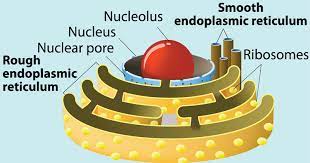
Endoplasmic Reticulum (ER)
3 Important Structural Characteristics of Endoplasmic Reticulum (ER)
- Irregular network of double membraned tubules.
- It is continuous with the plasma membrane on the outside and the nuclear membrane on the inside.
- May be Smooth Endoplasmic Reticulum (SER) i.e. without ribosomes or rough endoplasmic reticulum (RER) i.e. with ribosomes attached.
Functions of Endoplasmic Reticulum (ER)
- Endoplasmic Reticulum is a supportive framework for the cell.
- It synthesizes and transports proteins and fats.
Also Check –Endoplasmic Reticulum Class 9 – Definition , Location , Structure and Types
Also Check – 11 Important Functions of Endoplasmic Reticulum (ER)
Also Check – 6 Important Difference between Rough and Smooth Endoplasmic Reticulum
Also Check- 7 Difference Between Mitochondria and Endoplasmic Reticulum
Mitochondria
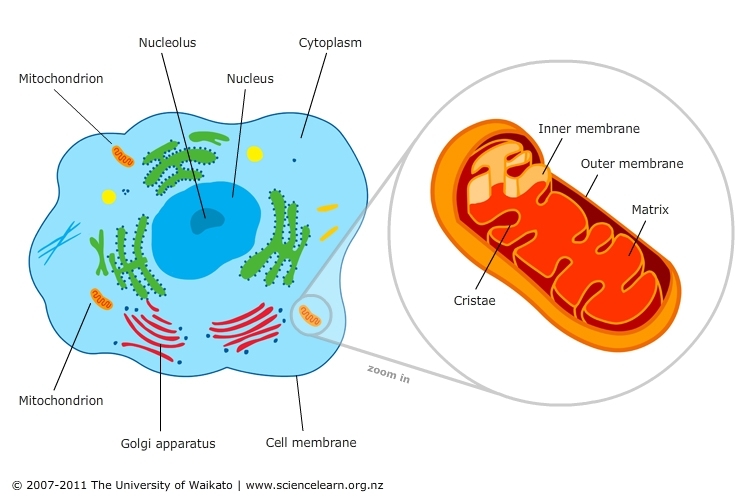
4 Important Structural Characteristics of Mitochondria
- Mitochondria are of various shapes but usually sausage-like.
- Double walled; inner wall thrown into folds (cristae).
- Have their own DNA (containing several genes).
- Also contain their own ribosomes.
Functions of Mitochondria
- Release of energy from pyruvic acid produced in cytoplasm in the form of ATP. Seat of cellular aerobic respiration and stores energy.
- Synthesis of respiratory enzymes.
Also Check – 10 Important Functions of Mitochondria
Also Check – Mitochondria – Definition ,Structure, Location, Functions, Diagram and Disorders
Also Check – Why is the Mitochondria called the Powerhouse of the Cell
Also Check – 7 Difference Between Mitochondria and Endoplasmic Reticulum
Also Check – 9 Important Difference Between Golgi Bodies and Mitochondria
Golgi Apparatus
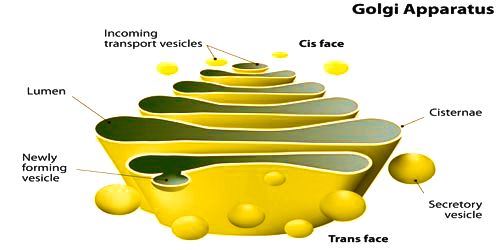
Golgi Apparatus
Structural Characteristics of Golgi Apparatus
- Golgi Apparatus are stacks of flattened membrane sacs.
- Consists of tubules (cisternae) vesicles and vacuoles.
Functions of Golgi Apparatus
Golgi Apparatus synthesizes and secretes hormones, Enzymes etc.
Also Check – 7 Important Functions of Golgi Apparatus
Also Check – What would happen to the life of a cell if there were no Golgi apparatus ?
Also Check – 9 Important Difference Between Golgi Bodies and Mitochondria
Also Check – What is Golgi Apparatus – Definition, Characteristics and Functions
Ribosomes
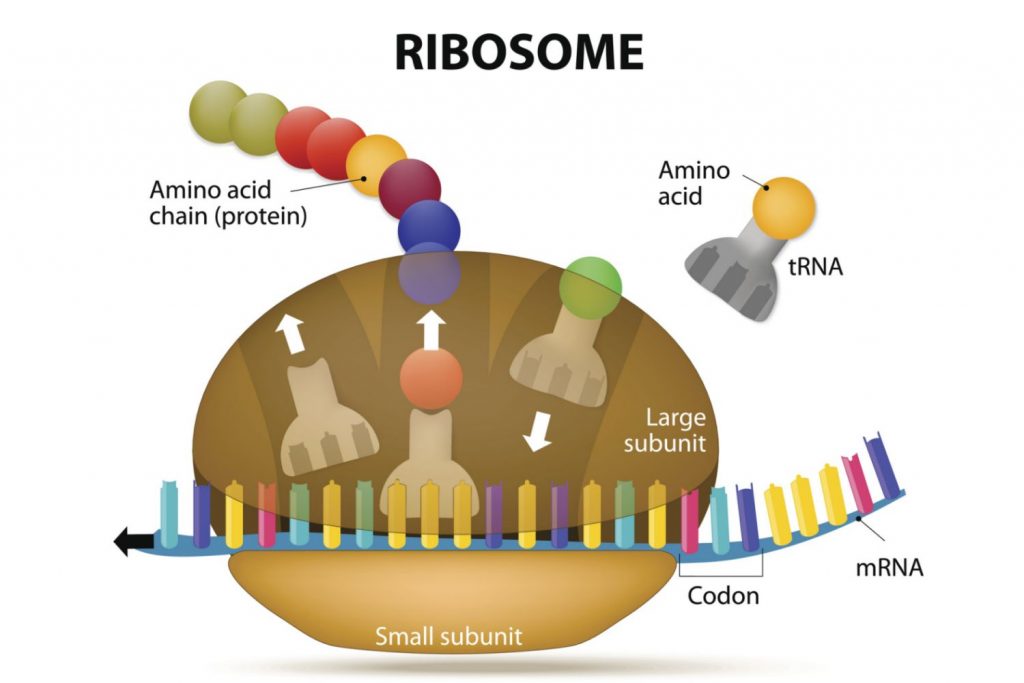
Ribosomes
Structural Characteristics of Ribosomes
- Ribosomes are small granules that are either scattered in the cytoplasm or attached to the outside of the endoplasmic reticulum.
- Ribosomes are single walled, dense, spherical bodies composed mainly of RNA.
Functions of Ribosomes
- Protein synthesis
Lysosomes
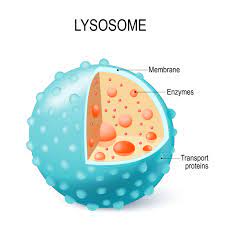
Lysosomes
Structural Characteristics of Lysosomes
- Lysosomes are membranous sacs budded off from Golgi body.
- Lysosomes contain different types of enzymes.
3 Important Functions of Lysosomes
- Intracellular digestion.
- Lysosomes destroy foreign substances.
- When cell is old or injured, these rapidly destroy organelles (hence called “suicide bags”).
Also Check – Lysosomes – Definition , Functions , Location and Importance of Lysosomes
Plastids
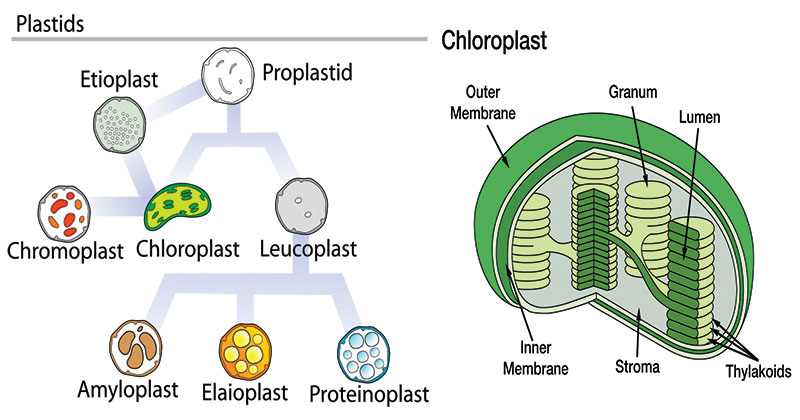
3 Important Structural Characteristics of Plastids
- Plastids are of several kinds, most common ones are chloroplasts containing the green pigment chlorophyll.
- Plastids are double membraned, proteinaceous matrix, containing DNA.
- Disc-like structures called thylakoids contain chlorophyll.
5 Important Functions of Plastids
- Chloroplasts – green in color, trap solar energy for photosynthesis, and contain chlorophyll pigment .
- Leucoplasts – colorless, store starch, have no pigment.
- Chromoplasts – variously coloured, impart color to flowers and fruits, contain the pigments
- Xanthophyll (yellow coloured pigment); Carotene (orange-red pigment).
- They also indirectly help in pollination by attracting different pollinators which then help disperse seeds.
Nucleus
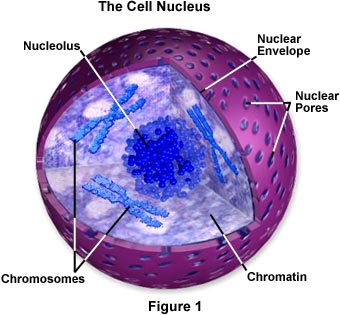
Nucleus
4 Important Structural Characteristics of Nucleus
- Largest cell organelle.
- Mostly spherical and dense.
- Nuclear membrane with pores to allow substances to enter and leave.
- Contains a network of thread-like structures called chromatin fibers which contain DNA.
Functions of Nucleus
- Nucleus regulates cell functions.
- If Nucleus removed, the cell dies.
- Nucleus contains chromosomes (bearers of genes that control hereditary characters). Read More …
Nucleolus

Nucleolus
Structural Characteristics of Nucleolus
1. One or more round-shaped substructure present inside the nucleus.
Functions of Nucleolus
- It produces ribosomes.
- Nucleolus participates in protein synthesis by forming and storing RNA.
- Nucleolus dictates ribosomes to synthesize proteins.
Chromatin Fibers
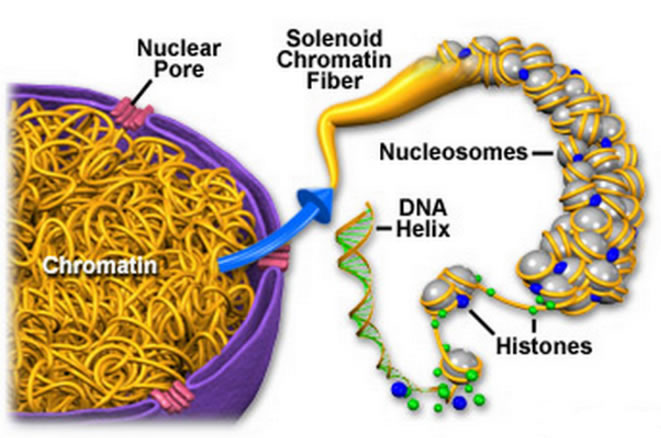
Chromatin Fibers
Structural Characteristics of Chromatin Fibers
- A fine thread like network in the resting stage of the nucleus which condenses into chromosomes during cell division.
- Made up of DNA threads.
Functions of Chromatin Fibers
- Chromosomes carry genes which are carriers of hereditary information from parents to offspring.
Vacuoles
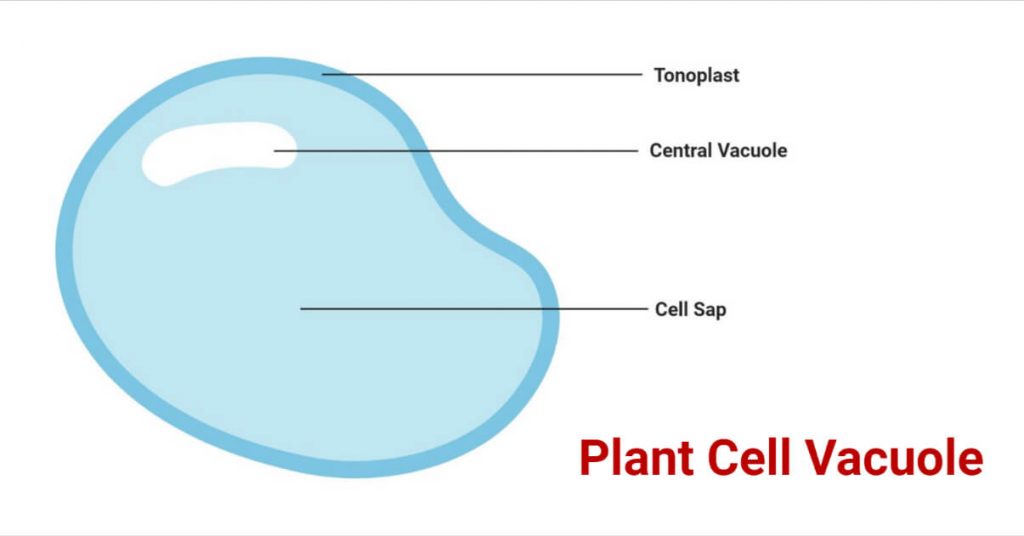
Vacuoles
Structural Characteristics of Vacuoles
- Vacuoles clear spaces with water or other substances in solution.
- Plant cells have few but larger vacuoles, while the animal cells have smaller ones.
- Vacuoles are covered by a covering called tonoplast.
Also Check-Why do plant cells possess large sized vacuole?
3 Important Functions of Vacuoles
- Vacuoles Storage of water and other substances, food, pigments, and waste products.
- Give turgidity to the plant cells by pressing against the cell wall.
- Contain pigments like anthocyanins (violet-blue color), etc.
Granules
Structural Characteristics of Granules
- Granules are small particles, crystals or droplets.
Functions of Granules
- Granules store starch (in plant cells),fat droplets which serve as food for the cell.
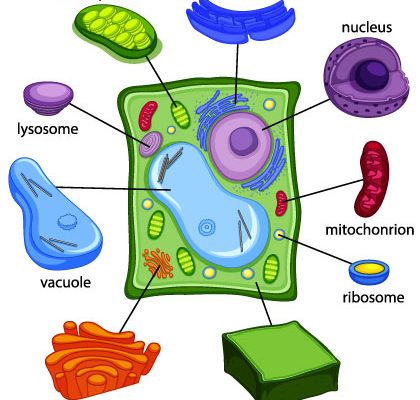
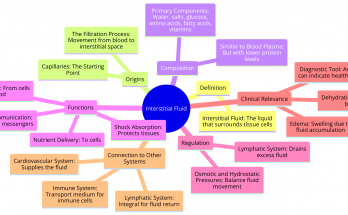
26 Comments on “Parts of Plant Cell – Location , Structure and Functions”